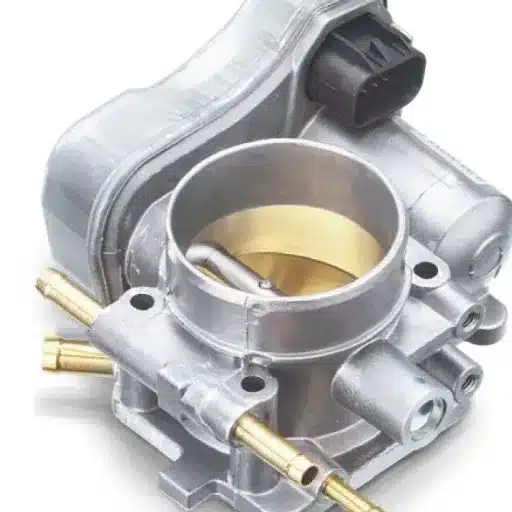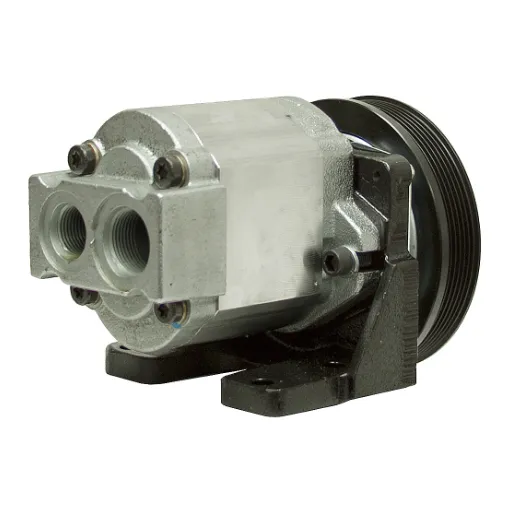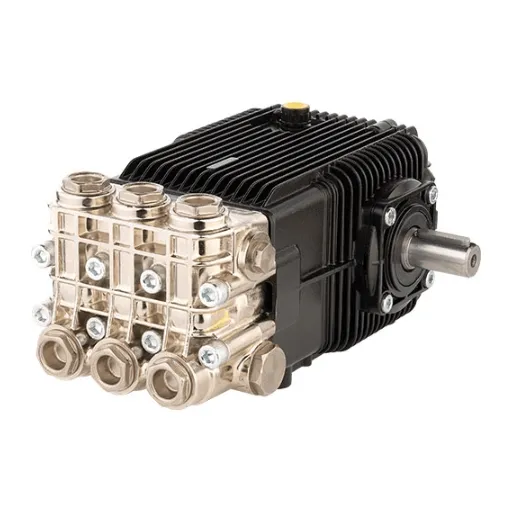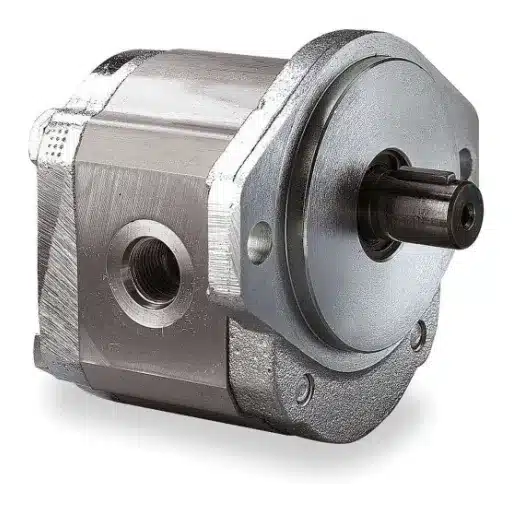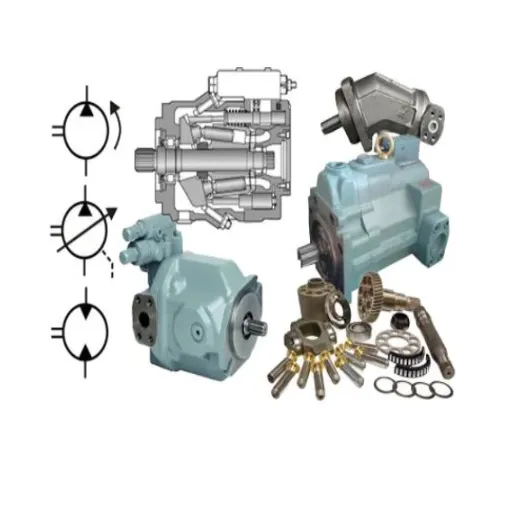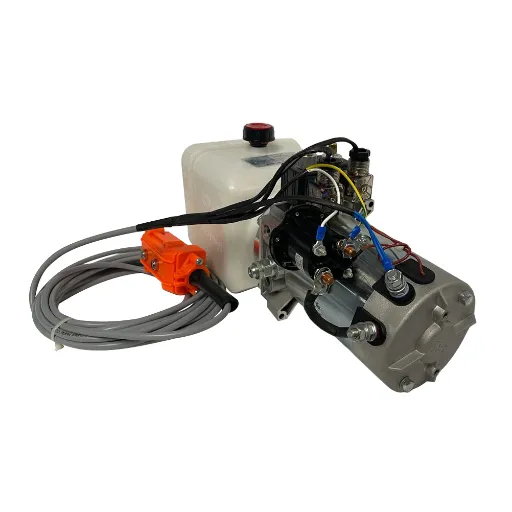Prompt maintenance and repair are essential for efficiency in heavy machines like Bobcats. An issue quite regularly faced by operators is the replacement of hydraulic pumps, which are essential for the operation of many of the Bobcat functions. The costs can be hard to ascertain owing to a number of variables involved, including parts, labor, and downtime for the equipment. This article will explain what goes into the cost of a Bobcat hydraulic pump replacement, so you can decide wisely and evaluate your costs appropriately. If you are budgeting for annual maintenance or the repair of an untimely breakdown, this guide will provide the answer to all your confusion.
Typical Price Ranges for Replacement
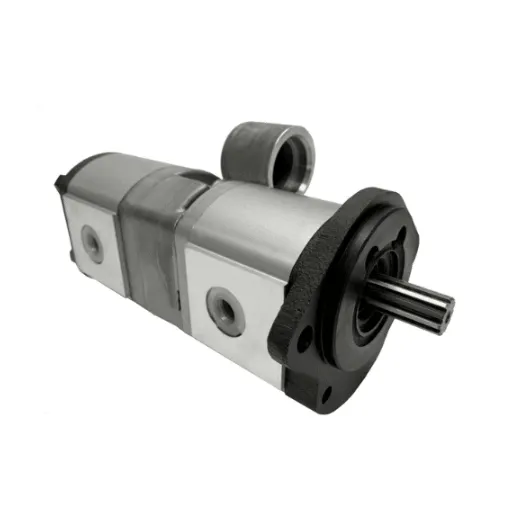
Average Cost Breakdown
The cost of replacing a hydraulic pump in a Bobcat usually lies between $1,500 and $5,000. This estimate includes the price of the pump, which in turn varies from $1,000 to $3,000 depending on the particular model and specifications, along with the labor costs, usually costing anything between $500 and $2,000. This broad scale in prices is due to factors such as the Bobcat model concerned, the type of hydraulic pump needed, and regional labor rates.
A major cost factor would be whether or not you select one of the OEM pumps or those of an after-market alternative. OEM pumps are usually more costly but come with assurance of compatibility and cave. Aftermarket pumps offer a cheaper alternative but vary in terms of quality and longevity. It is therefore essential that you evaluate the long-term reliability of the item against the initial savings so that you can make an informed decision.
Labor costs for hydraulic pump replacement will depend on repair complexity. Sometimes, taking apart a number of components to get to the pump can mean longer repair times and higher labor charges. To keep costs lower, it’s a good idea to get a check from a qualified technician on whether the pump really needs full replacement, or if fixing some parts would work even better, and for less money.
Comparative Analysis of OEM vs Aftermarket Parts
OEM parts offer fit, quality, and warranty, yet they are expensive and difficult to find, whereas aftermarket parts offer cheaper prices with wide availability and variants, though, unfortunately, they vary in quality and compatibility.
| Aspect | OEM | Aftermarket |
|---|---|---|
| Price | High | Low |
| Durability | Consistent | Variable |
| Guarantee | Yes | Sometimes |
| Supply | Limited | Broad |
| Compatibility | Perfect | May vary |
| Options | Limited | Extensive |
| Flexibility | Minimal | High |
| Efficiency | Standard | Can exceed OEM |
| Dependability | High | Depends on brand |
| Purpose | Daily drivers | Performance mods |
Additional Labor Costs
Labor expenses for hydraulic pump replacement can vary significantly depending on the repair complexity. The location of the pump within the equipment, how many components must be removed, and how long it takes to disassemble and reassemble these parts are all labor. For simpler systems or easily accessible pumps, labor costs may be on the lower end; however, with more intricate machinery, labor costs may rise substantially due to the increased time needed.
One should be sure to seek the opinion of a qualified technician in determining whether a hydraulic pump really needs to be fully replaced or if some repairs to individual components would do. Partial repairs may sometimes lessen the amount of labor time required and reduce the cost overall, all without sacrificing the integrity of the system itself. A proficient technician will be able to diagnose problems fast and, in doing so, offer solutions coded with cost-efficiency and reliable performance.
Obtaining several repair estimates is also a good way to keep labor costs down, as this will better allow one to compare repair fees. Some shops or service providers may offer replacement services at a higher rate but might also take a faster approach, or vice versa. Always base decisions concerning replacements on those qualified in the field, for without proper repair and timely maintenance, one cannot expect hydraulic system efficiency or subsequent failure avoidance to be assured.
Signs of a Failing Bobcat Hydraulic Pump
Unusual Noises and Their Implications
⚠️ Warning Signs: Listen for These Sounds
One crucial sign confirming a malfunctioning hydraulic pump on a Bobcat is the generation of peculiar noises during operation. These noises usually manifest as whining, grinding, or knocking sounds and signal some particular issue inside the pump or in the hydraulic system. Whining sounds indicate that the pump is experiencing cavitation, which means that air bubbles are formed in the hydraulic fluid due to low pressure or restricted flow. If such a condition persists, it can cause immense wear and probable damage to the internal components of the pump.
Grinding noises are caused by contaminants present in the hydraulic fluid, such as metal shavings, dirt, or other types of debris. Such contamination may cause erosion of important components such as gears and seals, thereby affecting the performance of the whole system and causing operational inefficiency. Knocking sounds may be caused by some loose or damaged internal parts that may bring into question the alignment and smooth functioning of the pump.
These sounds become important clues to diagnostics, underscoring the need for preventive maintenance and fluid analysis to address small issues before they blossom into expensive repairs or system downtime. Scheduled inspections, together with immediate attention to unusual noises, will help significantly in prolonging the life span of a Bobcat hydraulic pump while maintaining its productive efficiency.
Reduced Performance Indicators
Performance degradation in a Bobcat hydraulic pump may exhibit a variety of operational inefficiencies. There can be a decrease in output pressure, suggesting the possibility of internal leakage or wear in the pump seals or pistons, making it one of the most frequently observed indications. A slow response from the hydraulic actuators can also hint at flow rate disturbances coming from clogged filters, air ingress, or contamination of hydraulic fluids.
Heat generation aggravation is the mark of the other significant performance degradations. High temperature rise across a hydraulic system is indicative of excessive internal friction, which comes mainly because of worn or misaligned components, or due to lack of lubrication, or due to fluid breakdown. Looking into the trend of temperature through onboard diagnostic tools could be helpful in recognizing the issue at an early stage.
Lastly, higher energy usage indicates inefficiency. In other words, if a pump has to put in more effort to keep up with its usual output, it is probably facing hydraulic inefficiencies or mechanical strain. Trying to capture such information through regular energy audits or telemetry may go a long way in contributing towards well-informed maintenance decisions that would ultimately reduce unforeseen breakdowns and ensure maximum operational performance in the long run.
Fluid Leaks and Maintenance Alerts
One of the highly visible symptoms indicating underlying system failure, fluid leaks demand immediate repair. Leaks may occur through the hydraulic system, pipelines, or other important equipment due to wear and tear or pressure imbalance, or faulty sealing. Leaking fluids compromise the efficiency of systems by draining fluid or pressure, posing great dangers to the environment if the fluids are corrosive or toxic in nature. Conducting periodic inspections that employ modern leak detection techniques is able to find the exact location of the leak and provide measures on how to prevent further damage. Technologies such as ultrasonic sensors and infrared cameras are examples.
Modern practices in maintenance depend on telemetry data in real-time and automated alerts to determine whether systems are under abnormal conditions that can generate fluid leaks. A cluster or array of sensors monitors pressure variations, flow rates, and fluid levels in real-time and automatically issues alerts when the set parameters are outside the specified threshold. Such proactive monitoring lowers downtime and greatly diminishes the risk of a preventable catastrophic failure. For example, data analytics applied to predictive maintenance allows intervention at a very early stage, greatly enhancing the actual working life of critical equipment.
Integrating advanced interventions such as machine learning algorithms can drastically improve leak pattern identification and predictive maintenance alerting. These algorithms are those that analyze historical information, recognize trends, and are able to identify where potential failure points are based on usage conditions and material fatigue. The fusion of real-time monitoring, together with predictive insight, will provide actionable information to maintenance teams, allowing them to prioritize repairs, plan resource allocation, and ultimately prevent unnecessary disruption to operations.
Cost-Saving Tips for Repairs and Replacements
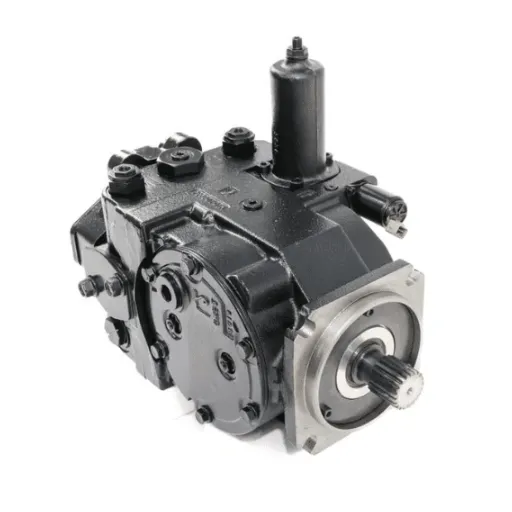
Understanding Warranties and Coverage
A thorough knowledge of warranties and coverage is needed to ensure a cost-effective means of using and maintaining a piece of equipment or building. Warranties are, in essence, contracts wherein the manufacturer or provider agrees to assure the buyer on certain conditions, especially against defects, malfunctioning, or failures that occur within a period of time specified. Other forms of protection could include parts replacement, labor costs, or full replacement, all depending on the terms of the warranty.
Therefore, it is essential to differentiate between limited warranties and extended warranties. Limited warranties generally include basic manufacturing defects, whereas extended warranties, frequently issued for an additional cost, will offer much longer coverage that can also cover accidental damage and wear and tear. It is also important to review exclusions and limitations based upon warranty documents; circumstances like damages from the environment or damages caused by improper use can actually nullify the coverage.
When consumers and organizations realize their rights in accordance with this understanding, their full benefit is ensured by keeping maintenance records in order, following usage rules to the letter, and registering warranty claims on time. Better compliance will be achieved using validated data extracted from manufacturers’ guidelines and updated industry practices, and thus avoid occasioning missteps that could invalidate a claim.
Preventive Maintenance Strategies
These preventive maintenance strategies serve as methodologies established for avoiding unexpected equipment failures and extending the life of the asset. These strategies involve planning maintenance systematically, conducting inspections periodically, and proceeding with maintenance in the event of a failure found by monitoring the production itself. The very basic approach involves having a maintenance schedule set beforehand, which usually depends on factors such as working conditions, suggestions of manufacturers, and experience with the equipment.
A part of preventive maintenance is condition monitoring; it uses vibration analysis, thermography, ultrasonic testing, and other technologies to detect early signs of failure, performance deviation, or anomalies for which corrective action can then be taken. For instance, with vibration analysis, mechanical systems may show symptoms of misaligned shafts or bearing defects before they become significant problems.
Furthermore, upkeep activities can be made more effective by predicting maintenance needs, with measurements gathered through IoT sensors in tandem with an apt machine learning model. These modern tools allow for real-time tracking of performance indicators against maintenance standard references and thus, provide actionable insight for performing just-in-time interventions that are cost-saving and save other valuable resources. These maintenance processes can be optimized on a far grander level by incorporating insights from industry-specific practices and research, which somewhat highlights emerging trends in maintenance standards.
Finally, standardized checklists and documentation further allow greater scope for controls over maintenance activities. Organizations that carry out such procedures with a high level of detail not only strengthen their compliance with safety regulations but also balance cost-effectiveness and reliability in operational resilience.
Importance of Proper Maintenance
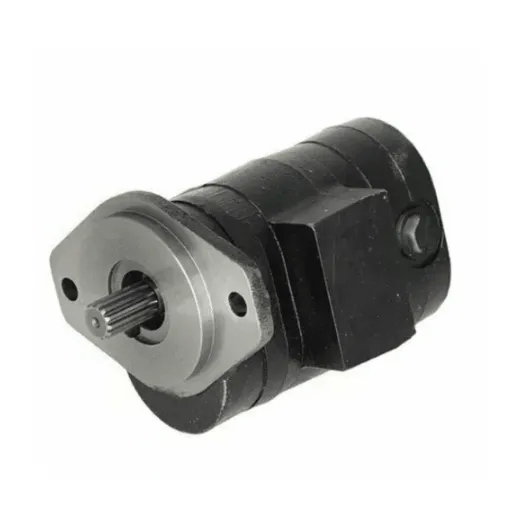
Regular Inspections and Their Benefits
Regular inspections serve as evidence of any maintenance program that is working because there may be instances where potential issues may have gone unnoticed, leading to costly failure or prolonged operation downtime. Inspections increase equipment life, safety, compliance, and general system lengths. Here are five more advantages of undertaking regular inspections:
- Boosted Equipment Performance: Regular inspection prevents the early deterioration due to wear and tear and the misalignment due to performance impairment. For example, a study shows that preventive maintenance can increase equipment performance up to 20-30% as compared to reactive repairs.
- Saves Cost of Expensive Breakdowns Made Possible by Early Detection: Early detection and repair of mechanical and structural troubles terminate expensive breakdowns. As per research, companies that always maintain their equipment regularly can reduce about 50% sudden maintenance expenses compared to companies without any systematic maintenance program.
- Enhanced Safety Standards: The inspection identifies hazards such as bad wiring, leakages, SOA, and structural distress before the risk is realized, thus ensuring compliance with safety regulations. This promotes fewer accidents at the workplace, thereby providing for a safer working atmosphere for employees.
- Drastically Reduced Downtime: Resolved before disruption hits operations, a newfound problem can wreak havoc on a service-free system. Industry surveys show approximately 40 percent less unplanned downtime annually for businesses that initiate regular inspections.
- Extended Equipment Life: Inspection and maintenance keep machines functioning at optimal levels, thereby extending the usable life of the machines. A good deal of care can help an asset last for 25 to 50 percent more years, resulting in huge savings in the long term.
These benefits clearly being dropped, emphasize the need for a far-ranging and regular inspection schedule that stands as an intermediate between boosting short-term operation and long-term asset management.
Fluid Changes and System Health
With fluid changes, it keeps machinery efficient and prevents premature wear. Lubricants, coolants, and hydraulic fluids are important to controlling friction, transferring heat, and preventing corrosion. All these fluids start to deteriorate with time due to thermal breakdown, contamination, and oxidation. Dirty fluid results in worn-out components, inefficient working under power, thus potentially disastrous systems. For example, it has been demonstrated that with the hydraulic fluid’s contamination, component life decreases by up to 90%, which makes maintenance of fluids very important.
The health of the system depends on fluid quality testing. Methods such as viscosity, spectrographic analysis, and particle counting give elaborate information regarding the state of a fluid and identify potential sources of contamination. Further action must be taken to identify ingress of water, particulate contamination, or chemical degradation. Acting on these insights could preserve system integrity and prevent irretrievably costly downtime caused by damaged components or catastrophic failure. Testing intervals should be fixed and considerably reduced for equipment that is subjected to a harsher operating environment.
Modern-day high-tech instruments are now available for automated fluid monitoring systems to monitor fluid quality in real time. The system uses sensors for monitoring important for predictive maintenance, such as temperature and pressure, along with contamination level. When integrated with an asset management plan, this technology reduces unscheduled maintenance and increases the life of fluids and components, and hence, improves overall machine reliability. When implemented in conjunction with well-documented good maintenance practices, such technology informs the effective and quantifiable route to optimal operational efficiency.
DIY Repair vs Professional Repairs
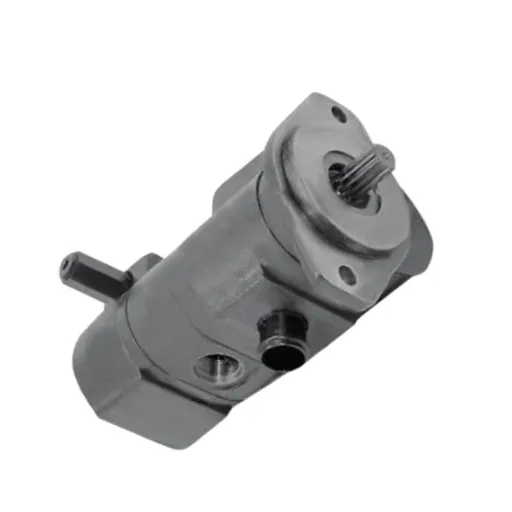
Cost Analysis of Each Approach
When one is weighing the cost-effectiveness of DIY repairs versus professional repairs, some key factors must be considered. Repairs done by oneself often have an upfront cost advantage because the expenses are limited to replacement parts, tools required for the job, and maybe even instructional manuals. On the other hand, one must think of the hidden costs. These could be time spent troubleshooting and fixing the problem, the cost of errors in performing the repairs, or improper fixes that may further damage a component and will thus be pricier to fix in the long run.
In contrast, professional repairs tend to involve higher upfront costs in terms of labor and diagnostic fees. However, the professionals undoubtedly have the expertise, equipment, and access to OEM (original equipment manufacturer) parts that ensure an exact and proper repair process. Moreover, professional services usually come with a warranty, thus lessening the monetary risk should problems arise from the repair within the warranty period.
In the end, the choice between DIY and professional repair depends on the complexity of the problem, the ability and knowledge of a person trying the repair, and potential long-term financial implications. By comparison, DIY could actually be more cost-efficient for easy jobs, whereas for lengthy or crucial ones, it is usually a better investment to have professionals service them, thereby cutting out the risks and ensuring that the job lasts.
Risks and Benefits of DIY Repairs
⚠️ Risks of DIY Repairs
- Lack of Expertise: Do-it-yourself repairs may exacerbate or worsen existing problems when insufficient knowledge or training is available. Research suggests roughly 40% of all individuals undergoing home repairs hire professionals at the end to fix errors made during their own DIY attempts.
- Safety Hazards: Handling tools and working with electrical systems or heavy machinery can be unsafe; for example, the U.S. Consumer Product Safety Commission reports thousands of injuries every year caused by home improvement accidents.
- Time-Consuming: Most DIY Projects take longer than professional work. An investigation from HomeAdvisor said that without experience and therefore the right tools, an average project done DIY can take roughly 4-5 times longer.
- Hidden Costs: DIY initially seemed cheaper, but it usually ends up with more unexpected costs, such as extra materials or fixing someone else’s errors. However, the data suggests an alarming 25% of all DIY projects each year run over the initial budget.
- Void of Warranties or Guarantees: Most DIY projects do not guarantee any warranties for their work quality, hence further increasing future costs on repairs made incorrectly by cheap hands. These wrongly fixed repairs may void all warranties of an otherwise covered product.
✅ Benefits of DIY Repairs
- Cost Savings: If done correctly, DIY projects cut labor costs, thus significantly reducing the expenses. Home improvement surveys show savings of about 60% for small-scale projects.
- Development of Skills: Engaging in DIY repairs improves technical skills and promotes learning, which in turn offers long-term benefits of being able to address issues on one’s own.
- Immediate Solutions: DIY projects tend to provide immediate solutions for minor fixes without having to wait for a professional’s availability for appointments or scheduling delays.
- Creative Freedom: DIY repairs give scope for customization, allowing an individual to adapt the solutions to his/her own liking and needs.
- Sense of Achievement: Repairs done independently instill pride and satisfaction within a person; research into DIY trends states that 75% rate the sense of accomplishment of having completed a repair as “strong.”
When to Call a Professional
From my perspective, one often decides to hire somebody depending on the nature and safety of the work being done. If the service calls for special knowledge or tools-I sometimes think of electrical works or advanced plumbing-trying to fix it on my own could put me in further trouble or worse, cause harm to me and the person attempting the work. Such professionals are-trained to deal with technical challenges and ensure that all work complies with safety standards, making them the appropriate choice.
Additional considerations involve long-term problems that an incorrect repair might cause. In the event of structural complications in my house, improper treatment would jeopardize the soundness of my home and might ultimately lead to huge damage. Professionals bring forth expertise and experience that can actually identify the root causes and execute all-encompassing solutions. I could also look at scheduling conflicts: if I cannot commit the necessary hours to do some DIY work, leaving the work to be done by somebody else will ensure faster and better results.
Last, but not least, I will be seriously thinking of the finances. To my understanding, an incredibly cheap fix could cost so much more to fix if something was done wrong. Having said all that, if I do decide to go out of my way to get the job done right, then hiring a professional is a step that gives one the utmost assurance, mostly because their work will likely be guaranteed or otherwise. This assures me that I am not going to meet sudden expenses for my property being devalued. Knowing what I cannot do and trusting others to come and do it is a forward-thinking, constructive approach to ensuring that repairs go smoothly.
Frequently Asked Questions (FAQ)
Q: What is the average cost of replacing a Bobcat hydraulic pump?
A: The cost of replacing a bobcat hydraulic pump can vary considerably, depending on factors such as the model of the bobcat machine, whether a new or rebuilt pump is chosen, and labor costs. You can expect to be anywhere between $1,500 and $3,500.
Q: How do I know when a hydraulic pump needs replacement?
A: Common signs of a failing hydraulic pump will be if it produces abnormal noises, a drop in efficiency, or leaks visible around the pump with hydraulic fluid. In any case, these signs should prompt one to check the level of hydraulic fluid and take stock of any wear on hydraulic hoses or their connections.
Q: Can I rebuild my old pump rather than replace it?
A: Rebuilding your old pump can be very economical compared to buying a new one if they have suffered only minor wear or damage. But, check that all issues are addressed, such as seals or other components that may affect performance and longevity.
Q: What are the common types of hydraulic pumps used in bobcat machines?
A: Hydraulic pumps come in different designs, including gear pumps, vane pumps, and piston pumps. The choice of pump is sometimes dependent on the hydrostatic system requirements of the particular application and machine.
Q: How long does a hydraulic pump normally last?
A: Depending on usage, maintenance, and operating conditions, a hydraulic pump usually operates from 5,000 to 10,000 hours. Still, the life of the pump can be extended if better care is applied by frequently checking for leaks and levels of hydraulic fluid.
Q: What steps are involved in replacing a hydraulic pump?
A: First, switch off the machine and secure it. Then, remove the hydraulic pump from its mounting position, disconnect the hydraulic lines, and check for any leaks. Next, put in the new pump, verify the levels and quality of the fluid, and then confirm that it is functioning perfectly well.
Q: Are there warranties for replacement pumps?
A: Most of the best-quality hydraulic replacement pumps have full warranties. It will be in your best interest to check with your supplier on the warranty terms. The warranty will ensure that the component is free from defects and that you will have a reliable component in your hands.
Q: What other costs must I consider when replacing a hydraulic pump?
A: Apart from the actual cost of the pump, consider costs like wages paid for installation by a professional, repairing or replacing hydraulic lines and hoses, and whatever is associated with hydraulic fluid in case it needs to be changed during the process.
Q: In what maintenance procedures can I make to prolong hydraulic pump life?
A: Maintenance procedures include monitoring the fluid level and quality, inspecting hydraulic hoses for possible wear or damage, and immediately addressing any indication of a failing hydraulic pump. Also, maintaining the right pressure and temperature inside the hydraulic system will make for an excellent inspection for supreme performance.
Q: How will I identify a fault with my Bobcat hydraulic system?
A: To diagnose possible problems, listen for abnormal noises, check for leaks around the pump, and observe the machine’s functioning. If you notice a loss of hydraulic energy or flow and pressure, it may suggest an issue with the hydraulic pump or system.
Key Takeaways
Proper maintenance, early problem detection, and informed decision-making between DIY and professional repairs can significantly extend the life of your Bobcat hydraulic pump while minimizing replacement costs. Regular inspections and quality fluid management are your best investments for long-term equipment reliability.



